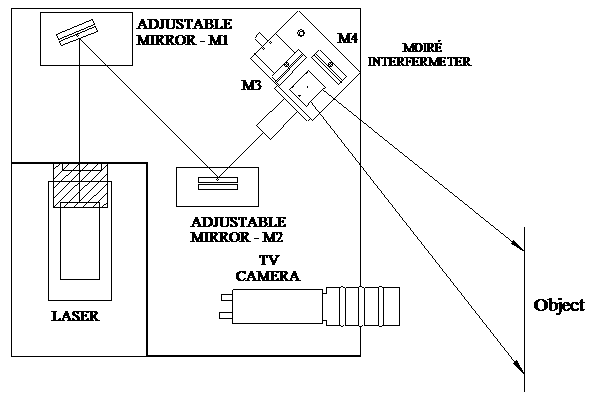
When the system is configured for Projected Fringe Moiré, laser light is directed into a shearing interferometer, which generates two interfering beams that form fringes that fan out to illuminate the object at an angle to the observation direction of the TV camera. The spatial frequency of the fringes is adjustable to any horizontal or vertical spacing, and one of the mirrors in the interferometer is mounted on a piezoelectric actuator. The fringes are given a quarter cycle displacement between TV frames so that they appear to sweep across the object.
When
these TV frames are fed into the HoloFringe300 interferometry program, they are processed in the
same way as for holography, shearography, or speckle correlation.
A motion of the object out of its surface plane causes the fringes to
shift sideways in the camera's image, and this causes a phase
shift analogous to holographic interferometry, except that the
displacements are now on the order of the projected fringe spacing.
The HoloFringe300 interferometry program can, therefore, display
vibration fringes or static displacement fringes for really large
motions. Unlike holography, however, one object can be replaced
with another because the surface microstructure is not part of the image
being used. (In fact, it is necessary to suppress object speckle
to make this process work properly.) It is possible,
therefore, to compare the surface contours of manufactured parts against
a master, or monitor a tool or die for wear.
Because the projected fringe pattern has to be resolved by the camera, and the sensitivity to displacement is governed by the fringe spacing, the resolution is related to the field of view. If the displacements are to be detected visually as fringe displacements, the resolution is in the order of 1/1000 of the field of view. If the displacements are to be detected numerically by data processing, the resolution can be 1/5000 to 1/10,000 of the field of view.